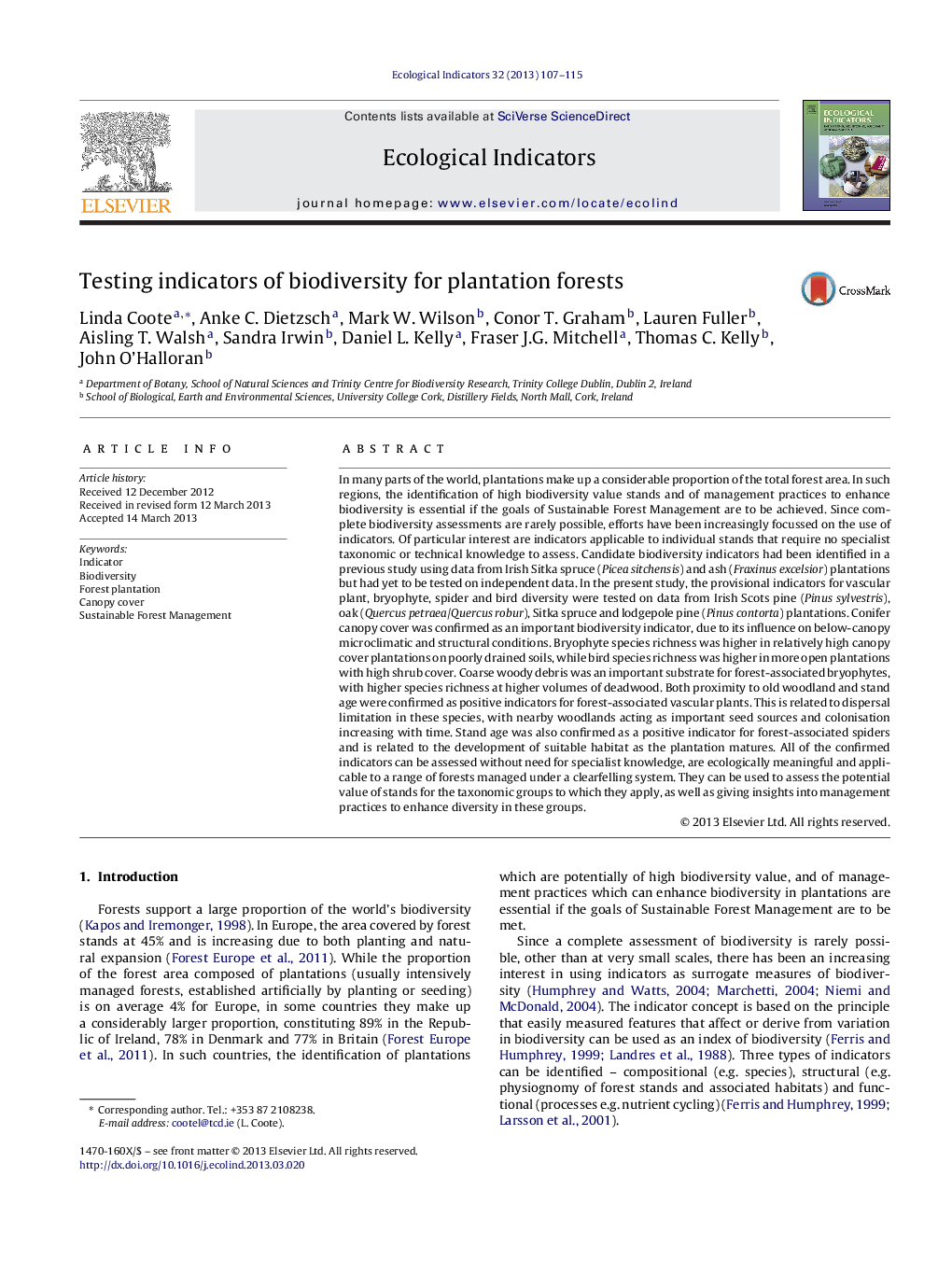| Article ID | Journal | Published Year | Pages | File Type |
|---|---|---|---|---|
| 4373392 | Ecological Indicators | 2013 | 9 Pages |
•Indicators of plant, spider and bird diversity in forest plantations were tested.•Canopy cover was confirmed as an important indicator in conifer plantations.•Bird diversity increased with shrub cover and woodland bryophytes with CWD volume.•Woodland plants and spiders increased with time and plants with proximity to woodland.•These confirmed indicators require no specialist knowledge to assess.
In many parts of the world, plantations make up a considerable proportion of the total forest area. In such regions, the identification of high biodiversity value stands and of management practices to enhance biodiversity is essential if the goals of Sustainable Forest Management are to be achieved. Since complete biodiversity assessments are rarely possible, efforts have been increasingly focussed on the use of indicators. Of particular interest are indicators applicable to individual stands that require no specialist taxonomic or technical knowledge to assess. Candidate biodiversity indicators had been identified in a previous study using data from Irish Sitka spruce (Picea sitchensis) and ash (Fraxinus excelsior) plantations but had yet to be tested on independent data. In the present study, the provisional indicators for vascular plant, bryophyte, spider and bird diversity were tested on data from Irish Scots pine (Pinus sylvestris), oak (Quercus petraea/Quercus robur), Sitka spruce and lodgepole pine (Pinus contorta) plantations. Conifer canopy cover was confirmed as an important biodiversity indicator, due to its influence on below-canopy microclimatic and structural conditions. Bryophyte species richness was higher in relatively high canopy cover plantations on poorly drained soils, while bird species richness was higher in more open plantations with high shrub cover. Coarse woody debris was an important substrate for forest-associated bryophytes, with higher species richness at higher volumes of deadwood. Both proximity to old woodland and stand age were confirmed as positive indicators for forest-associated vascular plants. This is related to dispersal limitation in these species, with nearby woodlands acting as important seed sources and colonisation increasing with time. Stand age was also confirmed as a positive indicator for forest-associated spiders and is related to the development of suitable habitat as the plantation matures. All of the confirmed indicators can be assessed without need for specialist knowledge, are ecologically meaningful and applicable to a range of forests managed under a clearfelling system. They can be used to assess the potential value of stands for the taxonomic groups to which they apply, as well as giving insights into management practices to enhance diversity in these groups.
